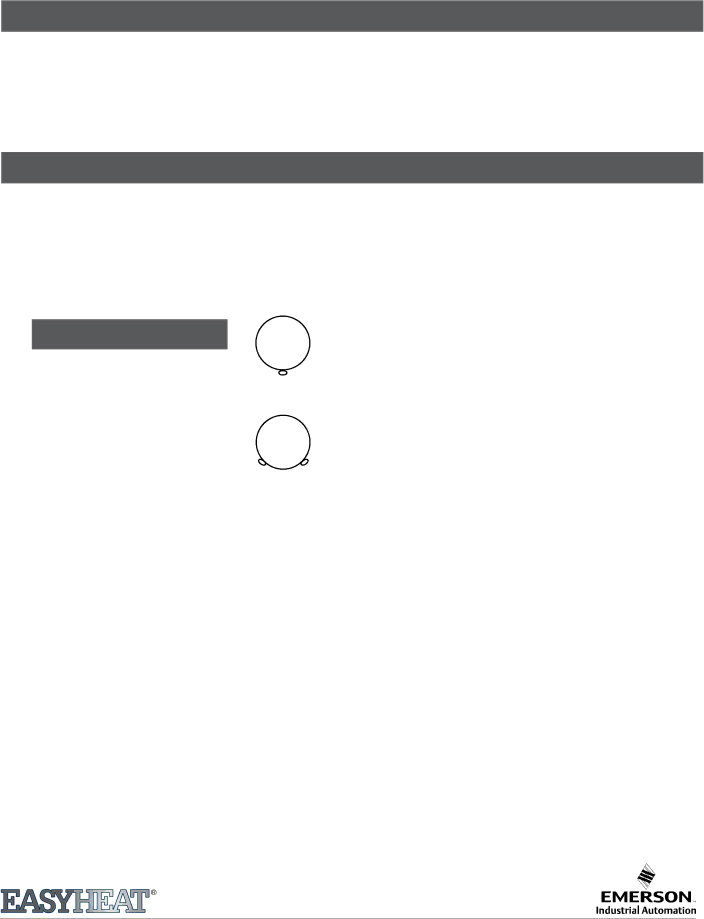
Cable Length Selection Chart Ambient Temperature
Metal Pipe
Pipe Dia | 3' | 7' |
|
| 19'- 25' |
|
|
| |||
.91m | 2.13m | ||||||||||
| |||||||||||
|
|
|
|
|
|
|
|
|
|
| |
0.5" (12.7mm) |
| A | A | B | B | C | C | E | F | G | |
|
|
|
|
|
|
|
|
|
|
| |
1.0" (25.4 mm) | A | A | A | B | B | C | C | E | F | G | |
|
|
|
|
|
|
|
|
|
|
| |
1.5" (38.1 mm) | A | A | A | B | B | C | D | E | F | G | |
|
|
|
|
|
|
|
|
|
|
| |
2.0" (50.8 mm) | A | B | B | C | C | D | E | F | G | H | |
|
|
|
|
|
|
|
|
|
|
| |
2.5" (63.5 mm) | A | B | B | C | C | D | E | F | G | H | |
|
|
|
|
|
|
|
|
|
|
|
PLASTIC Pipe
Pipe Dia | 3' | 7' | 19'- 25' | ||||||||
.91m | 2.13m | ||||||||||
| |||||||||||
|
|
|
|
|
|
|
|
|
|
| |
0.5" (12.7mm) |
| A | B | B | C | D | D | E | F | G | |
|
|
|
|
|
|
|
|
|
|
| |
1.0" (25.4 mm) | A | A | B | C | C | D | E | E | F | G | |
|
|
|
|
|
|
|
|
|
|
| |
1.5" (38.1 mm) | A | B | C | D | D | E | E | F | F | H | |
|
|
|
|
|
|
|
|
|
|
| |
2.0" (50.8 mm) | A | B | C | E | E | E | E | F | G | H | |
|
|
|
|
|
|
|
|
|
|
| |
2.5" (63.5 mm) | A | B | C | E | E | E | F | F | G | H | |
|
|
|
|
|
|
|
|
|
|
|
Selection Chart Key
| Model # | # of Cables |
|
|
|
A | PSR (*)006 | 1 Cable |
|
|
|
B | PSR (*)012 | 1 Cable |
C | PSR (*)018 | 1 Cable |
|
|
|
D | PSR (*)024 | 1 Cable |
|
|
|
E | PSR (*)050 | 1 Cable |
F | PSR (*)075 | 1 Cable |
|
|
|
G | PSR (*)100 | 1 Cable |
|
|
|
H | PSR (*)100 | 2 Cable |
Replace* with voltage code: 1 for 120V; 2 for 240V
Single Cable
Double Cable
Heating cable control options and power connection
For 120 Volt cables, the heating cable can simply be plugged into a ground fault protected electrical receptacle.
For 240 Volt cables, the cable is designed to be directly connected into an appropriate electrical outlet box supplied by ground fault protected circuit. Since it will be necessary to remove power from the cable from time to time, such
as in summer, always connect the cable to an appropriate
In addition, a remote thermostat similar to EasyHeat model C3RC can be used for 120 Volt or 240 Volt cables to reduce energy consumption and extend the life of the cable. Consult your local EasyHeat supplier or representative for other control
Attaching heating cable to pipes
Wrap EasyHeat HCA (optional Application Tape) or nylon cable ties at 6" (15.24 cm) intervals to secure the heating cable to the pipe.
•If the heating cable is the same length as the pipe, run it straight along the bottom of the pipe. If two cables are required, position them in the 4 and 8 o’clock positions.
•If the cable selected is exactly double the pipe length, apply a single trace of cable straight along the pipe all the way to the end, and loop back, applying cable straight along the pipe all the way back to the starting point.
•If the cable selected is somewhat less than double the pipe length, spiral the cable evenly along the entire length of pipe.
Protecting the system with thermal insulation
Before insulating, ensure that there is no damage, such as nicks or cuts on the heating cables. Immediately cover the pipe, cables, connections, valves and spigots with 1/2" (12.7 mm) to 1" (25.4 mm) thick fiberglass insulation or equivalent. Do not leave the cables exposed. Use
options.
Testing the system
Once the installation is complete, apply power to the heating cable; wait about one hour, and then turn on a water tap supplied by the protected pipe and test the temperature of the water. It should feel warm almost immediately as the water heated by the cable flows through the pipe.
Operation. Energize the cable/control upon the arrival of cold weather in the fall and
 Maintenance
Maintenance
Check cable each year for any damage before energizing the heating cable. Check any ground fault protection device for proper operation. Check pipe insulation and replace any that may be loose or damaged. Do not operate the cable if any damage is found.
www.easyheat.com
